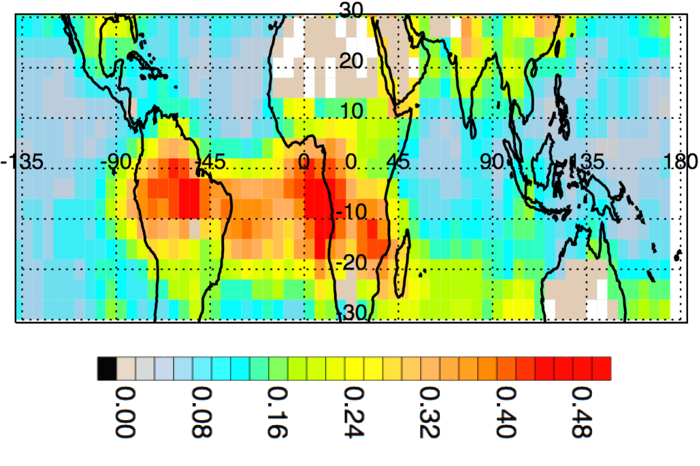Science
TES Provides Fresh Insight Into Reactive Nitrogen in the Tropics

Measurements of Peroxyacetyl nitrate (PAN) by NASA’s Aura Tropospheric Emissions Spectrometer (TES) are helping to make sense out of the mystery surrounding PAN’s role in Earth’s atmospheric chemistry. Scientists suspected that PAN likely played a fundamental part in the global ozone budget (i.e., air pollution), but they didn’t know exactly how. Knowledge about PAN mostly needed to be inferred from models and a sparse collection of in situ measurements – until now. Thanks to years of careful observation by TES, we now have real data to help solve this puzzle.
The valuable information from global satellite surveillance confirmed that PAN interacts with the various forms of reactive nitrogen. Reactive nitrogen is a term used for nitrogen compounds that support growth directly or indirectly, including all forms of nitrogen that are biologically, photochemically, and radiatively active, such as ammonia and nitrous oxide. Reactive nitrogen plays a major role in ozone production, and PAN facilitates its long-range transport.
The analysis of TES PAN measurements focused on tropical regions, where data from ground-based and aircraft campaigns are sparse, especially over the southern Atlantic Ocean. Because of PAN’s role in the transport of reactive nitrogen and ozone production, observing the behavior of PAN has confirmed and enhanced our understanding of how pollution is repositioned. Like an army of tiny Uber drivers in the atmosphere, PAN molecules transport the chemical compounds that make ozone on a global scale.
What does the activity of PAN mean to you? To the Earth? Ozone is the most important photochemical oxidant in the troposphere and is irritating and toxic to the human pulmonary system. The TES findings can be used to quantify the chemistry of our troposphere and understand its linkages to air pollution and climate.
Citation: Payne et al., Spatial variability in tropospheric peroxyacetyl nitrate in the tropics from infrared satellite observations in 2005 and 2006, Atmos. Chem. Phys., 17, 6341-6351, https://doi.org/10.5194/acp-17-6341-2017, 2017.
Mission Highlights
Swipe to view more highlights
Loading mission highlights...